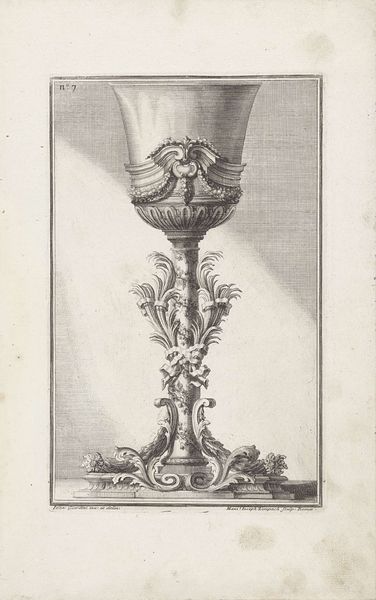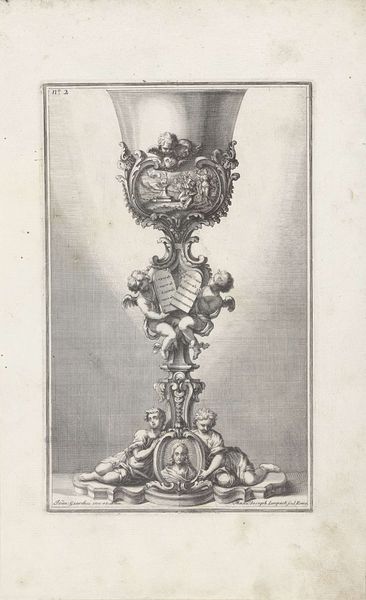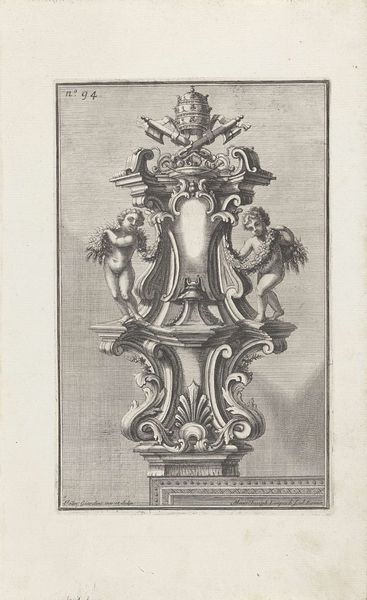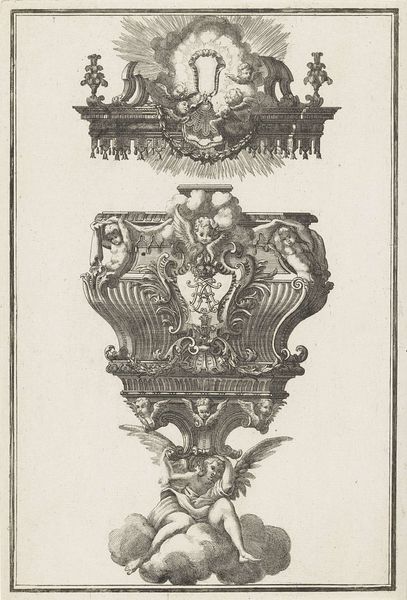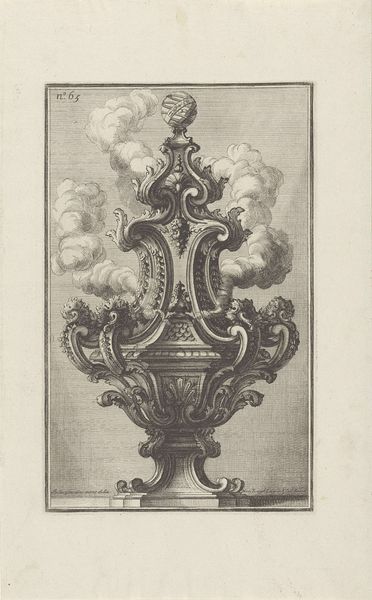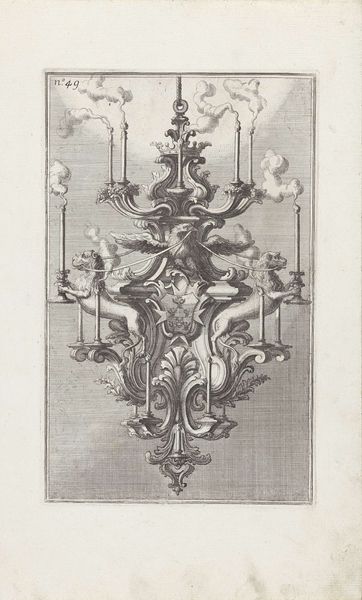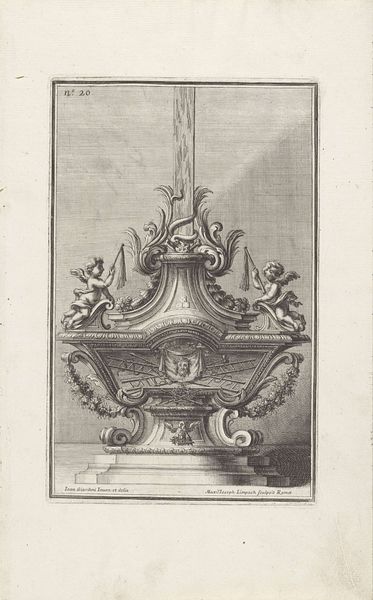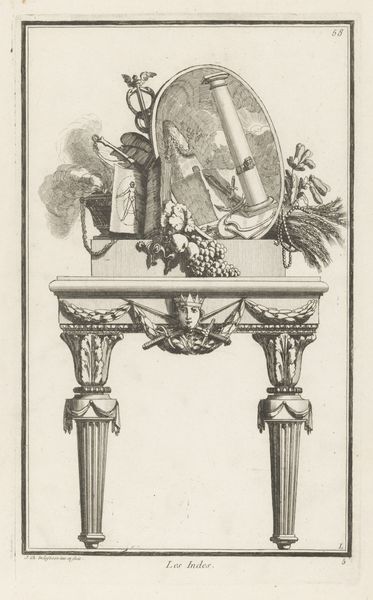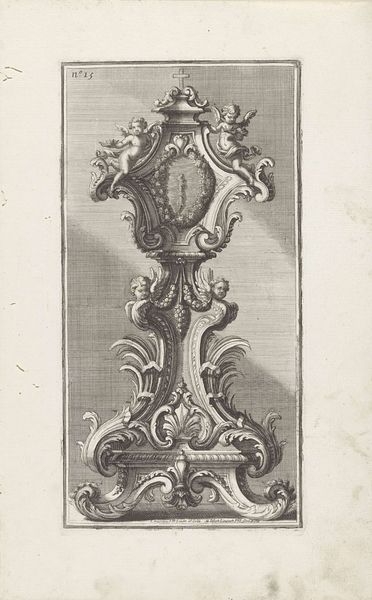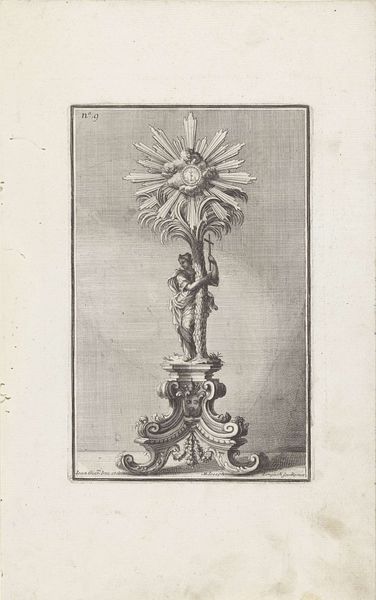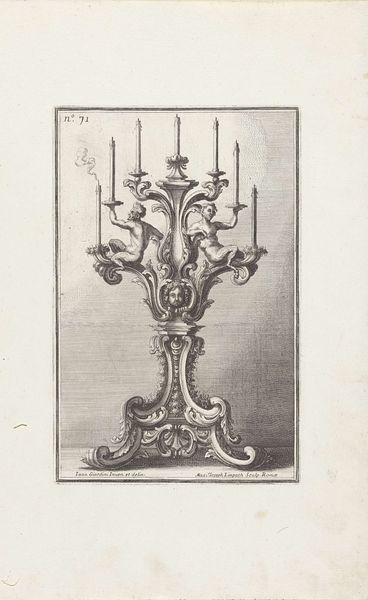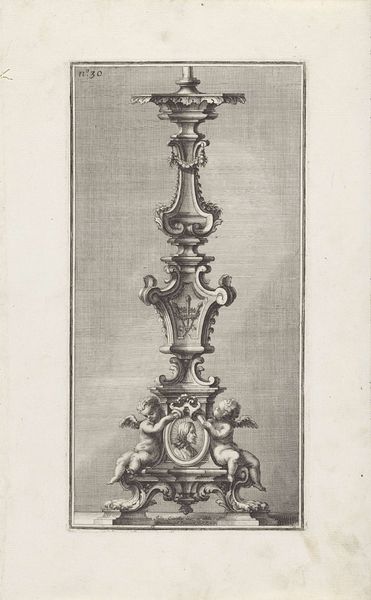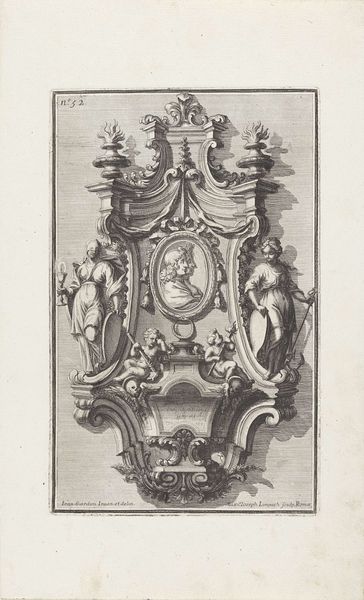
engraving
#
baroque
#
form
#
engraving
Dimensions: height 272 mm, width 175 mm
Copyright: Rijks Museum: Open Domain
Editor: This engraving, *Kelk met cherubijnen*, or Chalice with Cherubs, by Maximilian Joseph Limpach, dates back to 1714. I am immediately struck by how elaborate the form is. It's teeming with cherubs! What’s your interpretation? Curator: The chalice form is, of course, powerfully symbolic. The presence of the cherubs transforms it, speaking not just to religious practice, but also about transcendence. Editor: How so? Curator: The cherubs represent innocence and divine messengers. Their constant presence across the chalice underscores its function as a mediator between the earthly and the divine. Do you see how they aren't just decorations, but integral to the chalice's spiritual narrative? They activate the object itself. Editor: I see that. It's more than ornamentation; the cherubs repeat a cultural motif, making the religious function evident. But also, isn't this aesthetic design speaking to the Baroque sensibilities of the time? Curator: Absolutely. The Baroque era thrived on this kind of elaborate symbolism to evoke powerful emotions and grandeur. This chalice becomes not only a religious vessel but also an art object that speaks to faith, memory, and cultural ideals. Editor: So it bridges practicality, cultural memory, and aesthetics... Curator: Precisely. And perhaps reminds us how sacred objects reflect shared human experiences, shaped by symbols resonating through time. Editor: I now realize the image represents not only Baroque aesthetics, but is saturated with the religious symbolism of its time. Curator: Indeed. And cultural symbolism, and individual expression too. A complex dance.
Comments
No comments
Be the first to comment and join the conversation on the ultimate creative platform.
